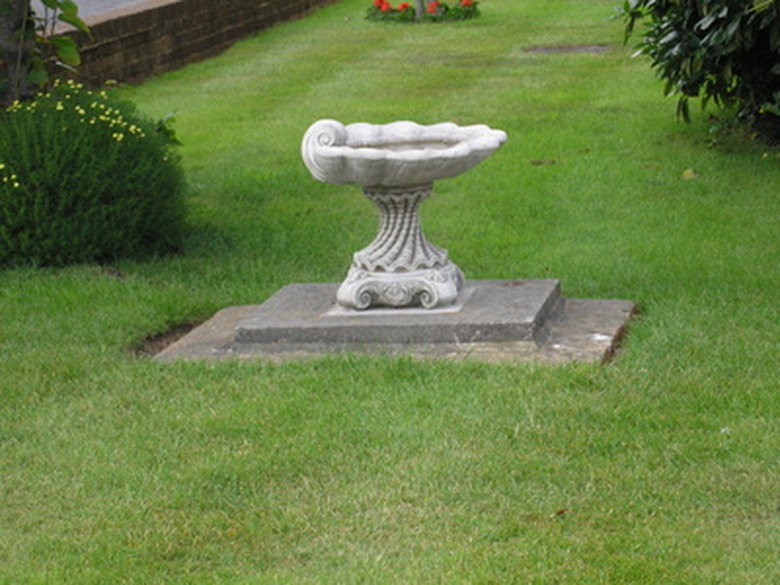How To Kill Your Grass & Replant New Grass
Things Needed
- Measuring tape
- Grass killer
- Face mask
- Gloves
- Spray pump
- Rake
- Tarp
- Tiller
- Sulfur or lime
- Compost
- Phosphorus-rich fertilizer
- Compost
- Grass seeds
- Mulch
- Garden hose
When all efforts at restoring a poorly-performing lawn fails, a gardener has no other choice but to remove the grass and start from scratch. Problems such as weeds and brown or bare spots, patchy and scarcely growth with brown and unhealthy grass reduce the appearance of lawn grass and the surrounding landscape, giving the area an unkempt appearance. Remove the grass if its quality and performance fails to improve despite your attempts at improving drainage, fertilizing, watering, applying pesticides and herbicides. Replant it yourself to save up on costs instead of hiring a professional.
Step 1
Measure the length and width of your lawn and multiply both the numbers to determine the square-foot area. Generally a gallon of commercial weed killer kills 300 square feet of lawn grass. Determine the amount you need based on your calculation.
- When all efforts at restoring a poorly-performing lawn fails, a gardener has no other choice but to remove the grass and start from scratch.
- Remove the grass if its quality and performance fails to improve despite your attempts at improving drainage, fertilizing, watering, applying pesticides and herbicides.
Step 2
Wear gloves and pour the grass or weed killer into a spray pump. You may need to dilute it (add water) if the instructions specify it. Wear your face mask and begin spraying over unwanted lawn grass, starting from one end of the lawn. Walk slowly and spray evenly over sections so you spray it over all the grass. Leave it on the grass for two days. This process takes anywhere from two days to several weeks.
Step 3
Inspect the area for stubborn grass plants that did not die with the grass killer. Spray over them again, and wait the appropriate length of time for the chemicals in the herbicide to take effect and kill it.
- Wear gloves and pour the grass or weed killer into a spray pump.
Step 4
Rake the dead grass to collect and remove it. An alternative to this is a dethatcher. Make sure you insert the rake deep into the soil to collect dead grass along with the roots. Put the dead grass in a wheelbarrow or tarp and dispose appropriately.
Step 5
Till the area down to 4 inches to break and loosen compacted soil, and aerate it. Collect and send a soil sample for a pH test to your local garden center to amend it, thus preventing problems you had earlier from recurring. A pH between 6.0 and 7.0 is ideal for most lawn grasses. Add sulfur to lower the pH, or lime to raise it.
- Rake the dead grass to collect and remove it.
- Collect and send a soil sample for a pH test to your local garden center to amend it, thus preventing problems you had earlier from recurring.
Step 6
Spread a mixture of equal amounts of compost and phosphorus-rich fertilizer over the site. Till it to ensure these soil conditioners go deep to provide necessary nutrients vital for a healthy lawn.
Step 7
Spread lawn seeds by hand, or use a seed spreader. Ideally you need 2 lbs. of seeds for every 500-square-foot area. Rake lightly to ensure they go 1/4-inch into the soil, and spread a layer of mulch over them. Mulch retains moisture and protects them from spreading until germination. Water the area lightly, and continue watering it twice a day until the seeds germinate.
- Spread a mixture of equal amounts of compost and phosphorus-rich fertilizer over the site.
- Rake lightly to ensure they go 1/4-inch into the soil, and spread a layer of mulch over them.
Tip
Follow manufacturers instructions when applying glyphosate herbicide like Round up to kill lawn grass. Protect plants you do not want to kill by spreading a tarp over them prior to spraying grass killer.
